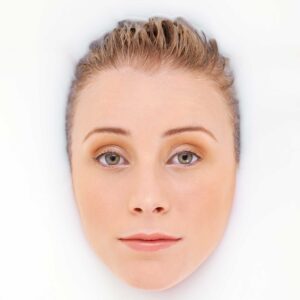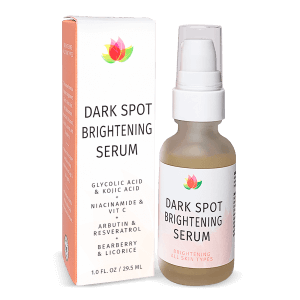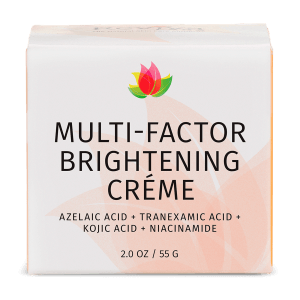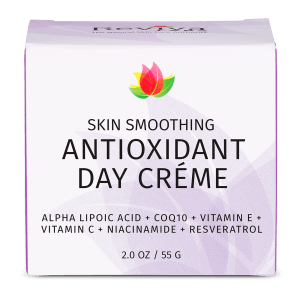Ingredients, Natural, Reviva Labs, Skin Care
Can Niacinamide Reduce Pores? The Science and Benefits of This Skincare Wonder
Pores—these tiny openings on our skin have become an obsession for many. In the pursuit of smooth, flawless skin, one of the most persistent challenges people face is the appearance of enlarged pores. It’s like they’re always there, staring back at us in the mirror. But can we really shrink them or at least make them less noticeable? Enter niacinamide, a powerhouse ingredient in the skincare world that’s been getting a lot of buzz for its ability to address, among other things, the appearance of pores.
If you’re someone who has spent hours scouring skincare labels, you’ve probably noticed niacinamide as a key ingredient in many formulations. But what is niacinamide, and more importantly, can it really help reduce the appearance of pores? The answer is a resounding yes, but there’s more to the story. Let’s break it down.
What Is Niacinamide?
Niacinamide, also known as vitamin B3, is a water-soluble vitamin that works with the natural substances in your skin to visibly improve its appearance. It’s known for its versatility and ability to address various skin concerns, from uneven tone and texture to fine lines and wrinkles. But perhaps one of its most celebrated benefits is its role in reducing the look of pores.
Before we dive into how niacinamide works on pores, let’s take a quick look at what causes pores to appear large in the first place. Pores are essentially the openings of hair follicles, and each one contains a sebaceous gland that produces oil (sebum). Several factors, including genetics, age, and excessive oil production, can make pores appear larger than they actually are. While you can’t physically shrink pores, you can make them appear smaller by keeping them clean, reducing oil production, and improving the overall elasticity of your skin. This is where niacinamide comes into play.
How Does Niacinamide Work?
Niacinamide offers multiple benefits for the skin, making it one of the most effective and well-rounded skincare ingredients available. So, how exactly does it work to reduce the appearance of pores?
Regulating Sebum Production
One of the main reasons pores can look more prominent is excess oil production. When your skin produces too much oil, it can clog pores, making them stretch out and appear larger. Niacinamide helps to regulate sebum production, ensuring that your skin stays balanced and hydrated without producing too much oil. By controlling oil production, niacinamide can prevent pores from becoming clogged and appearing larger.
In a study published in the Journal of Cosmetic Dermatology, researchers found that topical application of niacinamide significantly reduced sebum production over a four-week period. Less oil means cleaner, less congested pores and a smoother, more refined skin texture. That’s a win!
Strengthening the Skin Barrier
Niacinamide strengthens the skin’s barrier, which is crucial for keeping moisture in and external irritants out. When the skin barrier is compromised, it can lead to dehydration, inflammation, and—you guessed it—larger-looking pores. A strong barrier ensures that your skin retains moisture and stays healthy, which in turn makes your pores less noticeable.
Think of it like this: if your skin is well-hydrated and firm, your pores will naturally appear smaller. On the other hand, if your skin is dry and irritated, your pores may look more pronounced. Niacinamide works to keep the skin barrier in tip-top shape, ensuring a smooth, even complexion.
Reducing Inflammation
Inflammation is another culprit when it comes to the appearance of large pores. Conditions like acne and rosacea can cause redness, swelling, and irritation, all of which can make pores more visible. Niacinamide has anti-inflammatory properties that help to calm the skin and reduce redness, creating a more uniform texture. By reducing inflammation, niacinamide helps to make pores appear smaller and less noticeable.
Boosting Collagen Production
As we age, our skin naturally loses collagen and elasticity, which can cause pores to become more visible. Niacinamide promotes the production of collagen, helping to keep the skin firm and resilient. When your skin is firm, pores appear tighter and less noticeable. This makes niacinamide an excellent choice for those looking to combat the visible signs of aging while also reducing the appearance of pores.

Protecting Against Environmental Stressors
Environmental factors like pollution and UV radiation can wreak havoc on your skin, leading to clogged pores, premature aging, and increased oil production. Niacinamide acts as an antioxidant, protecting your skin from these external aggressors. By shielding your skin from damage, niacinamide helps to prevent the buildup of debris and oil in your pores, keeping them clean and refined.
How to Use Niacinamide in Your Skincare Routine
Now that we’ve established that niacinamide can indeed help reduce the appearance of pores, let’s talk about how to incorporate it into your skincare routine.
Finding the Right Product
Niacinamide is incredibly versatile and can be found in a variety of skincare products, including serums, moisturizers, and toners. When looking for a product, aim for one that contains at least 5% niacinamide. Studies have shown that concentrations of 5% or higher are effective in reducing oil production and improving skin texture.
One tip: if you have sensitive skin, start with a lower concentration and gradually work your way up to higher percentages as your skin builds tolerance. While niacinamide is generally well-tolerated, it’s always a good idea to patch-test a new product to ensure that your skin doesn’t react negatively.
Layering with Other Ingredients
Niacinamide plays well with other ingredients, making it a great addition to virtually any skincare routine. For instance, you can pair it with retinoids for an anti-aging boost or with hyaluronic acid to increase hydration. However, one ingredient you should avoid using with niacinamide is vitamin C. While both ingredients are highly effective, they can cancel each other out when used together, reducing their effectiveness.
If you’re using both niacinamide and vitamin C, apply them at different times of the day. For example, use vitamin C in the morning and niacinamide at night to get the full benefits of both without any interference.
Consistency is Key
Like most skincare ingredients, niacinamide won’t work overnight. It takes time for your skin to adjust and start showing visible improvements. However, with consistent use, you should begin to see results within 4 to 12 weeks. The key is to be patient and stick to your routine. Over time, you’ll notice that your skin appears smoother, more even toned, and that your pores look significantly smaller.
The Science Behind Niacinamide and Pores
So, we’ve covered how niacinamide works on the surface, but what does science have to say? As it turns out, quite a lot. Several studies have demonstrated niacinamide’s effectiveness in reducing the appearance of pores and improving overall skin health.
For example, a 2006 study published in the British Journal of Dermatology found that 4% niacinamide improved skin elasticity and reduced the appearance of fine lines and enlarged pores after 12 weeks of use. Another study, published in the Journal of Drugs in Dermatology, found that niacinamide was effective in reducing sebum production and improving skin texture, both of which contribute to smaller-looking pores.

Additionally, a clinical trial by Procter & Gamble demonstrated that 5% niacinamide could significantly reduce hyperpigmentation and improve skin barrier function, leading to a more even skin tone and reduced pore visibility.
It’s clear that the science backs up what skincare enthusiasts have been raving about—niacinamide is a game-changer when it comes to reducing the appearance of pores.
Beyond Pores: The Other Benefits of Niacinamide
While niacinamide’s pore-refining abilities are impressive, this multitasking ingredient offers a host of other benefits that make it a must-have in any skincare routine.
Brightening the Skin
Niacinamide is known for its ability to fade dark spots and even out skin tone. If you struggle with hyperpigmentation or post-inflammatory marks, niacinamide can help to brighten your complexion and give you a more radiant, youthful glow.
Fighting Acne
Thanks to its anti-inflammatory and sebum-regulating properties, niacinamide is also effective at treating acne. It helps to calm redness, reduce breakouts, and prevent future pimples from forming by keeping oil production in check. For those dealing with both acne and large pores, niacinamide is a godsend.
Reducing Fine Lines and Wrinkles
Niacinamide boosts collagen production and improves skin elasticity, making it an excellent ingredient for combating the signs of aging. Over time, it can help to reduce the appearance of fine lines and wrinkles, giving your skin a firmer, more youthful appearance.
Niacinamide as Your Go-To Pore Refiner
At the end of the day, niacinamide isn’t just another skincare fad. Its ability to regulate oil production, strengthen the skin barrier, and promote collagen makes it one of the most versatile and effective ingredients available. When it comes to reducing the appearance of pores, niacinamide truly delivers. Whether you’re struggling with oily skin, large pores, or signs of aging, adding niacinamide to your routine can give you the smooth, radiant skin you’ve been searching for.
It’s time to embrace niacinamide as your skincare hero—because who wouldn’t want clearer, more refined skin?









